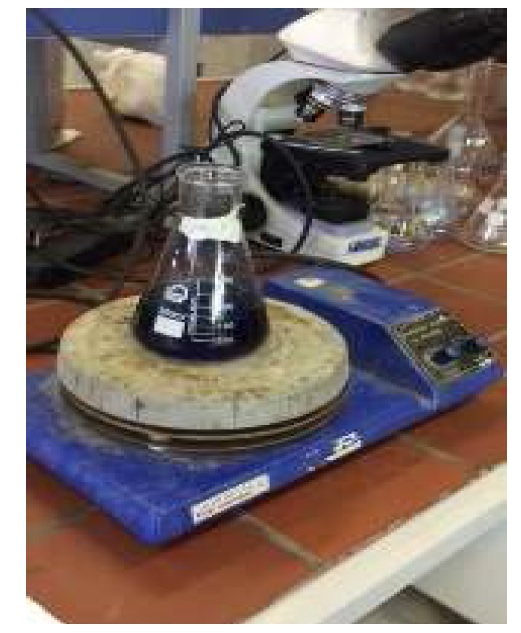References
[1] V. K. Gupta and Suhas, Application of low-cost adsorbents for dye removal--a review, J Environ Manage, 90 (2009) 2313-42.
[2] Z. Aksu, S. Ertugrul, G. Donmez, Methylene Blue biosorption by Rhizopus arrhizus effect of SDS (sodium dodecylsulfate) surfactant on biosorption properties. Chemical Engineering Journal. 158(2010)474-81.
[3] Y. Fu, T. Viraraghavan Fungal decolorization of dye wastewaters a review, Bioresource Tech, 79(2001)251-62.
[4] N. Daneshvar, S.A. Vatanpour, M.H. Rasoulifard, 2008. Electro-Fenton treatment of dye solution containing Orange II: Influence of operational parameters, Electroanalytical Chemistry, 615(2008)165-174.
[5] A. Al-kdasi, A. Idris, K. Saed, C.T. Guan, treatment of textile wastewater by advanced oxidation process.Global Nest, 6 (2004) 222-230.
[6] R. Jalilian, A. Taheri, Synthesis and application of a novel core-shell-shell magnetic ion imprinted polymer as a selective adsorbent of trace amounts of silver ions. e-Polymers, 18 (2018) 123-134.
[7] A. Alinsafi, M. Khermis, M.N. Ponsa, Electro-coagulation of reactive textile dyes and textile wastewater. Chemical Engineering and Processing, 44(2005) 461-470.
[8] N. Bellakhal, M. Dachraoui, M. Oturan, M., degredation of tartrazine in water by electro-fenton process. De la Société Chimique de Tunisie , 8 (2006) 223-228.
[9] A. Ventura, G. Jacquet, A. Bermond, V. Camel, Electrochemical generation of the Fenton's reagent: application to atrazine degradation. Water research, 36(14), 3517-3522, (2002).
[10] M.A. Oturan, I. Sires, S. Perocheau, 2008. Sonoelectro-Fenton process: A novel hybrid technique for the destruction of organic pollutants in water. Electro analytical chemistry, 624 (2008) 329-322.
[11] S. Hammami, N. Oturan, N. Bellakhal, Oxidative degradation of direct orange 61 by electro-Fenton process using a carbon felt electrode: Application of the experimental design methodology. Electro analytical Chemistry, 610 (2007) 75-84.
[12] C.S. Chiou, C.Y. Chang, J.I. Shie, Decoloration of reactive black 5 in aqueous solution by electro-fenton reaction. Environmental engineering and management, 16 (2006) 243-248.
[13] R. Wandruszka, Adsorbents for the removal of arsenic, cadmium, and lead from contaminated waters, Journal of Hazardous Materials, 171 (2009) 1-15.
[14] T. Robinson, B. Chandran, and P. Nigam, "Removal of dyes from an artificial textile dye effluent by two agricultural waste residues, corncob and barley husk, Environ Int, 28 (2002) 29-33.
[15] H.H.M. salehi, M. Mirzaee, Experimental Study of Influencing factors and kinetic in Catalitic Removal of methylene blue with Tio2 nano power, American journal of environmental Engineering, 2 (2012) 1-7.
[16] O.J. Hao, H.Kim, P.C.Chiang, Decolorization of waste water, Environmental Science Technology, 30 (2000) 449-505.
[17] J. Cenens; R. A. Schoonheydt, Visible spectroscopy of methylene blue on hectorite, laponite B, and barasym in aqueous suspension. Clay and Clay Minerals, 36 (1988) 214–224.
[18] Y. Matsui, N. Ando, T. Yoshida, R. Kurotobi, T. Matsushita, and K. Ohno, Modeling high adsorption capacity and kinetics of organic macromolecules on super-powdered activated carbon, Water Res, 45 (2011) 1720-8.
[19] M. Toor and B. Jin, Adsorption characteristics, isotherm, kinetics, and diffusion of modified natural bentonite for removing diazo dye, Chemical Engineering Journal, 187 (2012) 79-88.
[20] H. Treviño-Cordero, L. G. Juárez-Aguilar, D. I. Mendoza-Castillo, V. Hernández-Montoya, A. Bonilla-Petriciolet, and M. A. Montes-Morán, Synthesis and adsorption properties of activated carbons from biomass of Prunus domestica and Jacaranda mimosifolia for the removal of heavy metals and dyes from water, Industrial Crops and Products, 42 (2013) 315-323.


